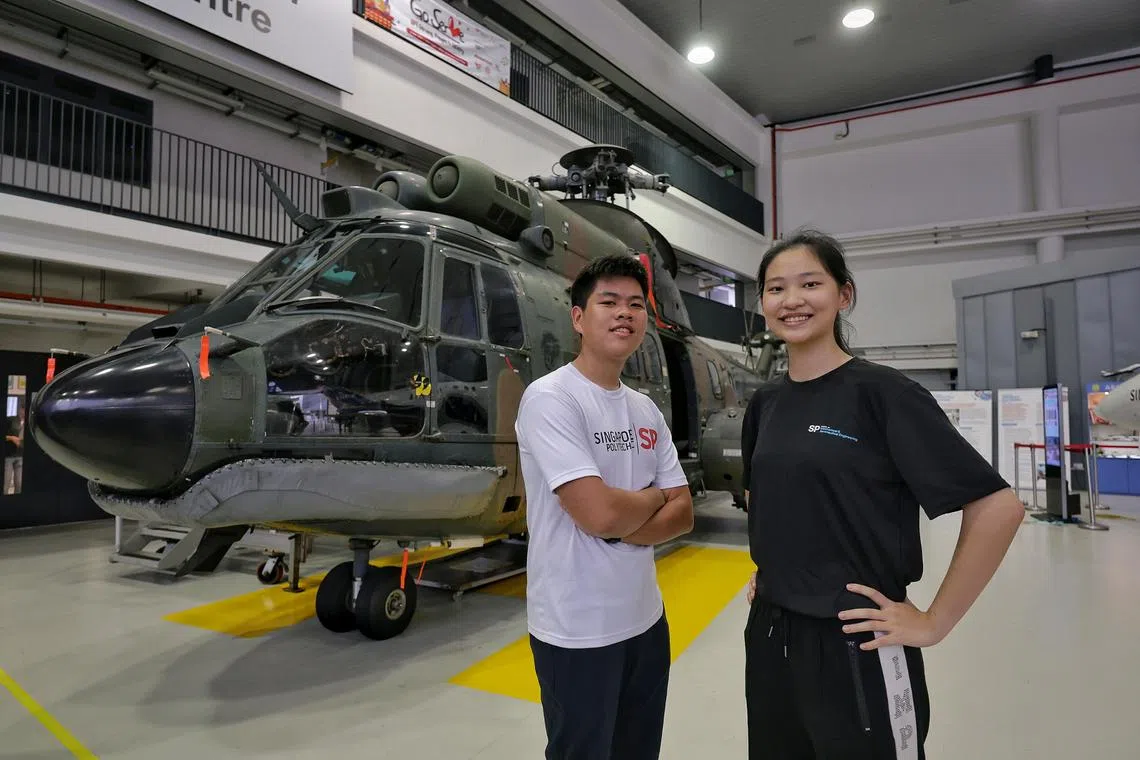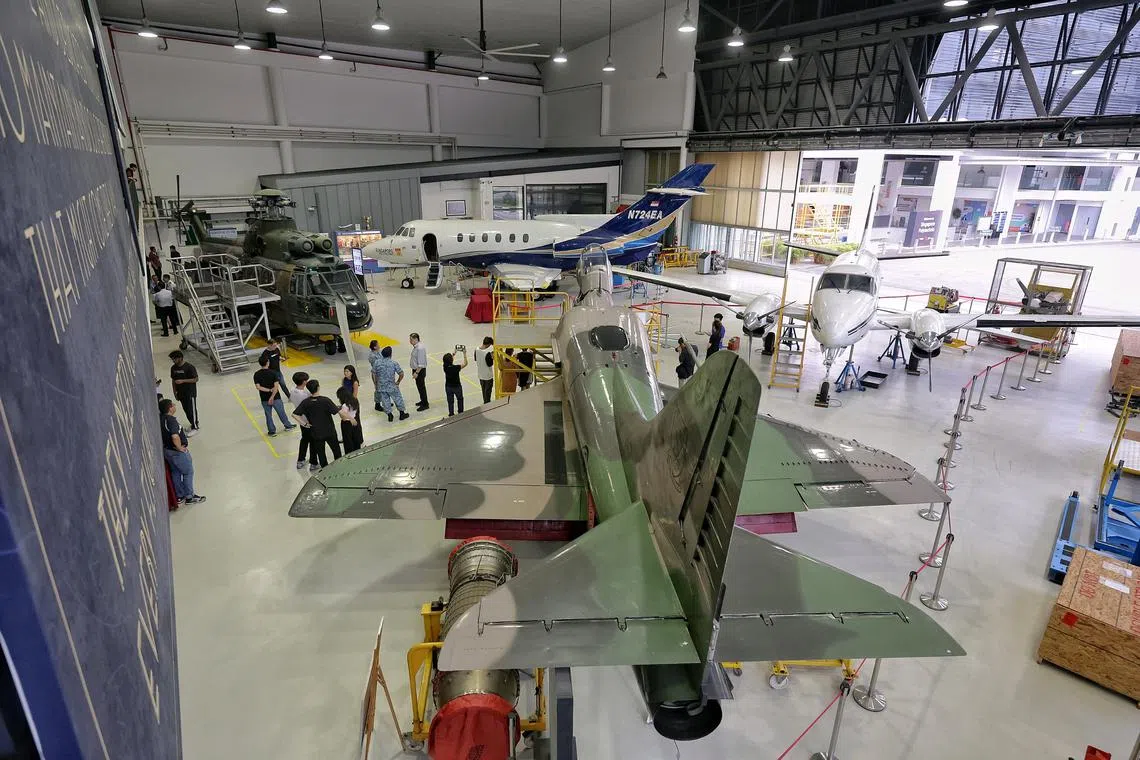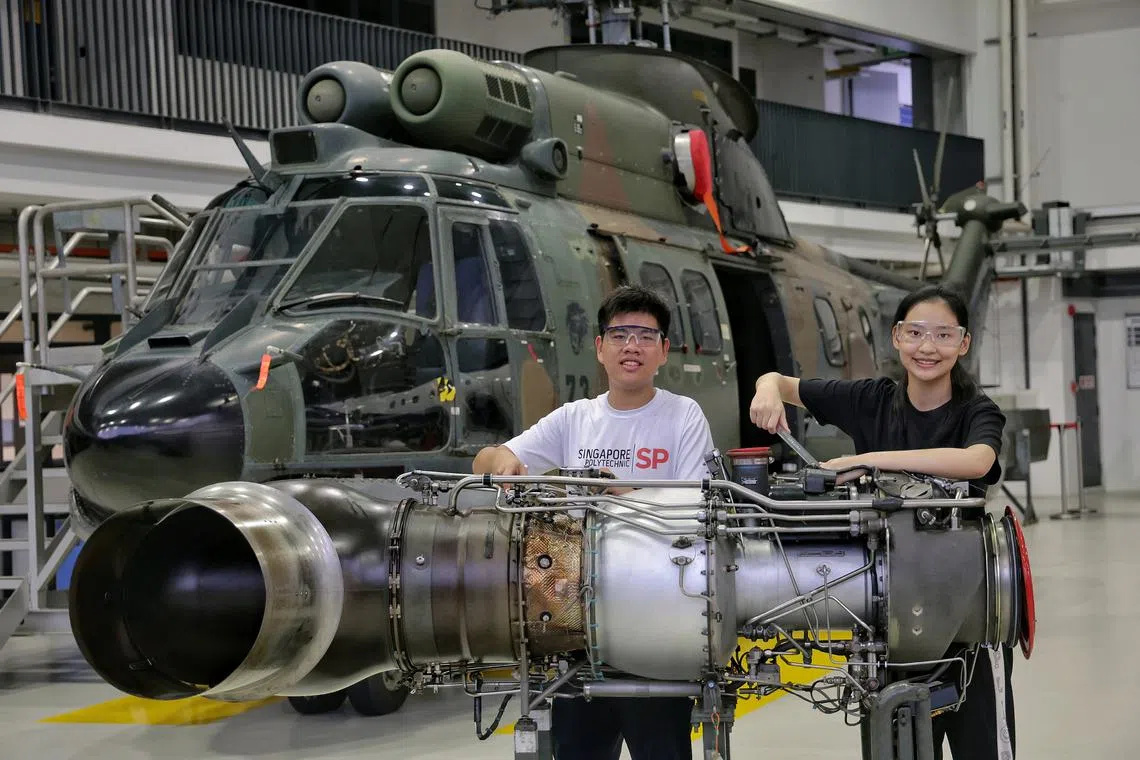Singapore Poly students first to get hands-on experience with Super Puma helicopter
Sign up now: Get ST's newsletters delivered to your inbox

Singapore Polytechnic students Chan Keng Yeow (left) and Weng Xianjun will get to learn with the AS332 Super Puma helicopter.
ST PHOTO: KEVIN LIM
Follow topic:
SINGAPORE - They were just 13 when they first got to know each other because of their shared love for aeroplanes. Now, the schoolmates will be among the first polytechnic students to get to learn working with the AS332 Super Puma helicopter.
Year 3 students Weng Xianjun and Chan Keng Yeow, both 19, met when they joined the Singapore Youth Flying Club in secondary school. In pursuit of their interests, they met again in Singapore Polytechnic (SP), doing courses in similar fields.
Ms Weng is studying aeronautical engineering while Mr Chan is studying aerospace electronics.
They are among 330 students across the two courses who will get hands-on experience working with the military-grade helicopter – exploring its systems and engines and learning from real-world aircraft maintenance.
The helicopter is equipped with updated technology for both mechanical and electronic aspects, giving students more practical training in aircraft aerodynamics and ground support equipment, among other subjects.
An agreement was inked between SP and the Republic of Singapore Air Force (RSAF) on Sept 23, as the polytechnic officially received the helicopter.
Super Puma helicopters were previously used for troop-lifting operations with the Singapore Army and also involved in search-and-rescue missions.
Up till 2001, they were also used to fly the state flag at the National Day Parade.
In 2021, it was reported that the Super Puma would be progressively replaced
The Super Puma is the second helicopter that SP has acquired for its students to obtain hands-on experience.
The first was the UH-1 Iroquois, a utility helicopter that was given to SP in November 2010. It was used by over 13,800 students, mainly for training in aircraft maintenance. It has since been returned to the RSAF.
The newer helicopter currently sits in SP’s Aero Hub, along with three other aircraft used by students over the years to learn from.
These include the A-4SU Super Skyhawk fighter plane, which SP received in 2006 to allow students to get hands-on mechanical experience. This was followed by the Hawker 700A aircraft, a fully operational business jet that was bought in 2016, and the Beechcraft King Air B90, a turboprop utility aircraft bought in late-2016.

The Aero Hub gallery in Singapore Polytechnic.
ST PHOTO: KEVIN LIM
Mr Liew Hui Sing, an aeronautical and aerospace specialist at SP’s school of mechanical and aeronautical engineering, said the Super Puma is fully functional, and students can enter and start its engine but will not be allowed to fly it.
“Students will get the chance to dismantle parts of the aircraft, and study its structure and various electronic parts,” he said.
Ms Weng said the new helicopter gives her the chance to work with different aircraft material.
The Super Puma is newer than the previous helicopter and made of composite metal, she said.
“I’m sad because I’m graduating soon and will not get a lot of time with the new helicopter,” said Ms Weng, adding that she is still excited to explore the aircraft.
She hopes to pursue further studies in mechanical engineering after graduation, and eventually work in the aviation industry.

Singapore Polytechnic students Chan Keng Yeow (left) and Weng Xianjun will get hands-on experience working with the military-grade helicopter.
ST PHOTO: KEVIN LIM
Mr Chan said the Super Puma will give him the opportunity to learn from new systems, adding variety to his learning.
While he has not had the chance to work on the aircraft yet, he is excited to get to work with an aircraft that has a glass cockpit.
This is different from the analogue system on the previous helicopter, he said. “In a glass cockpit, the screen is electronically powered, so we have more electronic components to explore.”
Mr Chan, whose love for aircraft began after he went to his first air show when he was seven, hopes to sign on with the air force to become an aircraft engineer after he graduates.
“The skills that I’m learning working with the current helicopter, even safety skills and different procedures and just learning with a physical aircraft, will give me transferable and valuable skills for the future,” he said.


